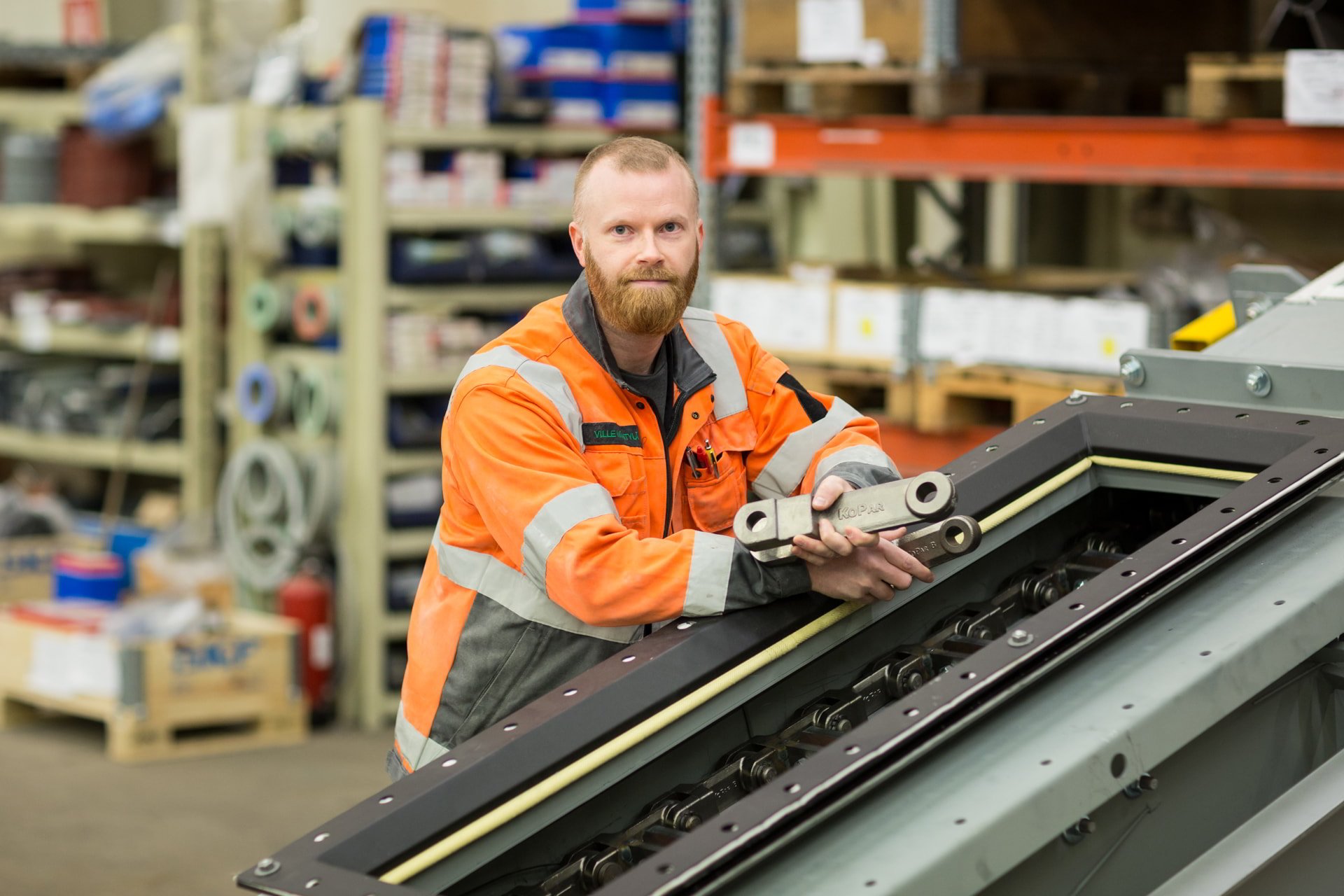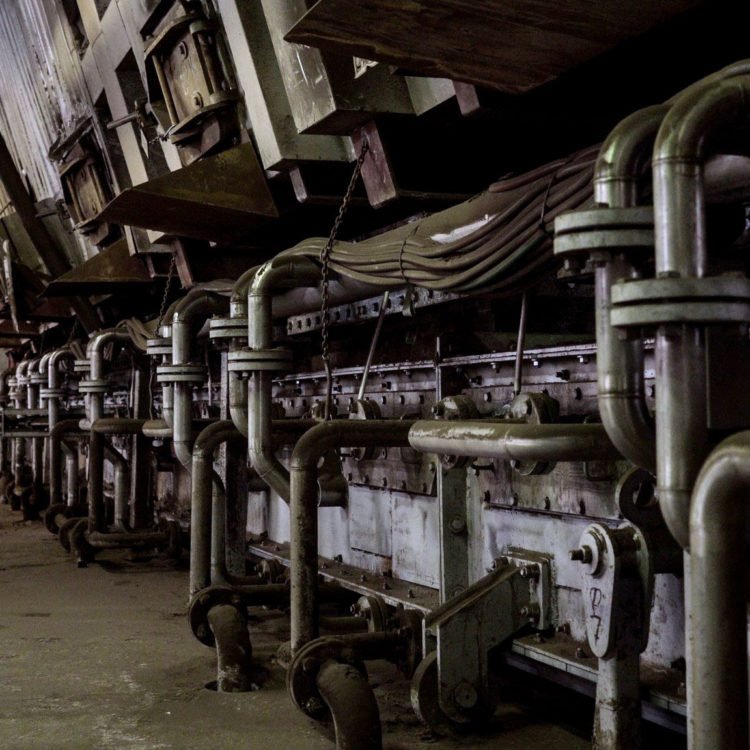Understanding the Mechanics of Drag Chain Conveyors
At the heart of material handling, especially in heavy-duty industrial applications, lies an efficient and robust system known as the drag chain conveyor. This equipment is designed to transport a wide variety of materials through the processing stages of a plant with reliability and ease. The fundamental mechanics involve a chain, or multiple chains, which drag the material along a fixed path, providing a controlled method of movement.
The chains are typically made of high-strength steel and are linked to a series of discs or attachments that directly interact with the material being conveyed. As the chain moves, the physical dragging action moves the material along the conveyor path. This simple yet effective mechanism is what makes the drag chain conveyor a staple in many industrial settings.
Key Components and Their Functions
Every drag chain conveyor consists of several key components that work in harmony to ensure smooth operation. The drive unit is the power behind the movement, providing the necessary force to set the chain in motion. The conveyor casing, usually a robust and enclosed structure, ensures that the materials are contained and guided correctly throughout their journey.
Additionally, the material inlet and outlet points are strategically placed to facilitate the easy loading and unloading of materials. The chain itself, along with the flights or paddles attached to it, is the core component that directly interacts with the material, pulling it along the conveyor path. These elements are meticulously designed to withstand the rigors of industrial use.
Advantages of Utilizing Drag Chain Conveyors
Opting for a drag chain conveyor system offers a multitude of advantages. Their robust design allows for the handling of a variety of materials, from powders to large, abrasive chunks, without the risk of clogging or jamming. This makes them particularly suitable for industries dealing with bulk materials such as mining, power generation, and construction.
Moreover, the enclosed nature of these conveyors not only minimizes material loss but also protects the material from external contaminants. This is crucial in applications where maintaining material purity is essential. The low maintenance requirements and high reliability further contribute to the overall efficiency of the system.
Customization and Versatility
We understand that each industrial application has its unique challenges and requirements. That's why drag chain conveyors are highly customizable, with various configurations available to suit specific needs. Whether it's the length of the conveyor, the type of chain used, or the material of construction, each aspect can be tailored to optimize performance for the intended application.
The versatility of these conveyors is evident in their ability to operate effectively in various orientations. They can be designed to move materials horizontally, on an incline, or even vertically, providing a flexible solution to complex material handling challenges.
Operational Considerations for Peak Performance
To ensure that a drag chain conveyor operates at peak performance, several operational considerations must be taken into account. Regular inspections and maintenance are crucial to prevent unexpected downtime and to extend the service life of the conveyor. Attention should be given to the chain tension, integrity of the flights, and the condition of the drive unit.
Furthermore, the material characteristics should be well-understood to select the appropriate conveyor design. Factors such as material size, temperature, and abrasiveness can significantly influence the choice of conveyor components and materials of construction to ensure compatibility and efficiency.
Environmental and Safety Aspects
Environmental responsibility and safety are paramount in today's industrial landscape. Drag chain conveyors offer the benefit of a closed system, which significantly reduces the emission of dust and particles into the environment. This feature not only improves the working conditions for personnel but also helps in complying with environmental regulations.
Safety features can be integrated into the conveyor design, such as emergency stops, guards, and warning devices. These measures are essential to protect the workforce from potential hazards associated with the operation of heavy-duty conveying equipment.
Integration into Existing Systems
One of the challenges faced by many industrial plants is the integration of new equipment into existing systems. Drag chain conveyors are designed with this in mind, offering compatibility with a wide range of upstream and downstream equipment. This seamless integration ensures that the addition of a new conveyor does not disrupt the overall workflow of the plant.
Moreover, the control systems of these conveyors can be synchronized with other parts of the production process, allowing for coordinated operation and increased automation. This level of integration is crucial for modern industries looking to optimise their processes and increase productivity.
Choosing the Right Conveyor for Your Application
Selecting the right drag chain conveyor for your application is a critical decision that can impact the efficiency and cost-effectiveness of your operation. It is essential to consider the specific material handling requirements, including the type of material, volume to be conveyed, and the distance it needs to travel.
Consulting with experienced professionals who can provide insight and recommendations based on your particular needs is invaluable. We pride ourselves on our ability to offer expert advice and support to ensure that you choose the most suitable conveyor for your application.
Future Developments and Innovations
The landscape of material handling is constantly evolving, with ongoing developments and innovations in conveyor technology. Advancements in materials science and engineering are leading to even more durable and efficient drag chain conveyors that can handle the most demanding applications.
Additionally, the integration of smart technologies and IoT (Internet of Things) is paving the way for conveyors that are not only self-monitoring but also predictive in maintenance needs. These innovations promise to further enhance the capabilities of drag chain conveyors, ensuring they remain a vital component of industrial operations well into the future.
Conclusion
Drag chain conveyors are an indispensable part of material handling in various heavy industries. Their robust design, customization options, and operational efficiency make them a preferred choice for moving bulk materials. By understanding the key components, advantages, and considerations associated with these systems, industries can significantly improve their material handling processes.
As we continue to innovate and adapt to the changing needs of industry, the role of drag chain conveyors is set to become even more integral. With a focus on environmental and safety considerations, as well as the potential for future technological advancements, these systems represent a reliable and forward-thinking solution for material transport.

You have a challenge that needs solving?
Let us help! Contact us for more information about our products and services.
